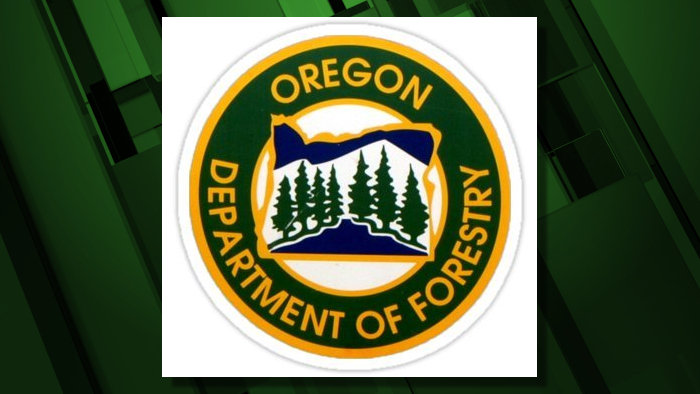Oregon Dept. of Forestry, fire prevention experts urge caution during spring yard debris burns

70 percent of Oregon wildfires are human-caused, officials say
SALEM, Ore. (KTVZ) – The Oregon Department of Forestry and other fire prevention experts urge the public to exercise caution when disposing of yard debris this spring, saying the drought conditions this year put Oregon at a higher risk of wildfire
May is Wildfire Awareness Month, which is a great time to trim trees, bushes, and tidy up plants around your home that could catch fire. This is what we call creating a “defensible space” around your home and property. As you begin spring clean-up, the Oregon Department of Forestry and Keep Oregon Green urge you to consider alternatives to burning.
Preferable options aside from burning include composting or recycling. Check with your local disposal company for recycling options. You can also cover a part of the pile with plastic to keep it dry until the fall when it’s safer to burn. Delaying your burn plans will give the debris more time to cure and avoids spring holdover fires as fire risk increases with hotter, drier weather.
“We expect this year to be another dry fire season, so the more we can reduce human-caused fires, the better,” said Mike Shaw, Fire Protection Division Chief. “Fire prevention is something that all Oregonians should have at the forefront of their mind. Humans cause the majority of Oregon’s fires, but they can also prevent them.”
Seventy percent of wildfires in Oregon are human-caused fires, with debris burning being the No. 1 cause. By waiting to burn or taking extra steps to control a fire, Oregon can significantly reduce the risk of creating a large wildfire.
If burning now is the only option to dispose of yard debris, fire prevention specialists ask people to follow safe burning practices. The following tips can help stop run-away burn piles:
- Call before you burn – Burning regulations vary by location depending on the weather and fuel conditions. If you are planning to burn, check with your local Oregon Department of Forestry district, fire protective association, fire department, or air protection authority to learn about current burning restrictions or regulations, and if you need a permit.
- Know the weather – Burn early in the day and never burn on dry or windy days, because fires can spread out of control more easily.
- Clear a 10-foot fuel-free buffer around the pile – Make sure there are no tree branches or power lines above
- Keep burn piles small – Large burn piles can cast hot embers long distances. Keep piles small, maximum of four feet by four feet. Add debris to the pile in small amounts as the pile burns.
- Always have water and fire tools nearby – When burning, have a charged water hose or a bucket of water, and shovel on hand to put out the fire. Drown the pile with water, stir the coals, and drown again, repeating until the fire is out cold.
- Stay with the fire until it is out cold – State laws requires monitoring of debris burn piles from start to finish until it is out cold. This law is intended to ensure sparks or embers that jump from the fire can be put out quickly.
- Recheck burn piles. They can retain heat for several weeks and restart when the weather warms up and winds blow.
- Never use gasoline or other flammable or combustible liquids to start or speed up your fire.
- Burn only yard debris – State laws prohibit burning materials or trash that create dense smoke or noxious odors.
- Costs of run-away debris burns– State law requires the proper clearing, building, attending and extinguishing of open fires all year. If your debris burn spreads out of control, you may have to pay for suppression costs, as well as the damage to your neighbors’ properties. This can be extremely expensive.
More tips on wildfire prevention, including campfire safety, motorized equipment use, and fire-resistant landscaping can be found on the Keep Oregon Green website. Find public use restrictions for Oregon Department of Forestry protected lands before your burn.